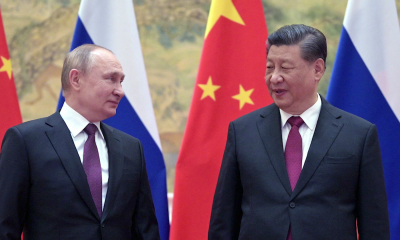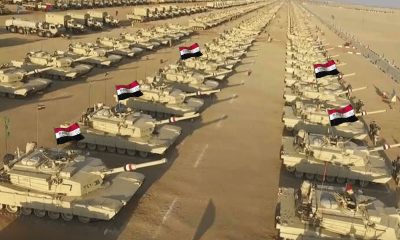Analysis
Decades of Espionage: How Israel’s Intelligence Network Crippled Hezbollah

Israeli spies infiltrated Hezbollah for decades, culminating in Hassan Nasrallah’s assassination and the decimation of the terror group’s operations.
Israel’s decades-long infiltration of Hezbollah stands as one of the most meticulously executed intelligence campaigns in modern history. The New York Times investigation uncovers the deep reach of Israel’s espionage into the ranks of the Lebanese terror group, culminating in the assassination of Hassan Nasrallah and the dismantling of critical Hezbollah operations. This extensive network, built through years of methodical intelligence gathering, reshaped the balance of power in the Middle East and weakened Iran’s regional influence.
The campaign against Hezbollah was rooted in operations conducted during and after the 2006 Lebanon War, which laid the groundwork for Israel’s ability to infiltrate the group. Early successes included planting tracking devices on Hezbollah’s Fajr missiles, which enabled precision strikes on hidden munitions sites during the war. The Mossad subsequently expanded its reach, recruiting human sources within Hezbollah who provided critical information about secret facilities, hideouts, and weapons caches.
In 2012, a breakthrough by Israel’s Unit 8200 revealed a trove of intelligence, including the exact locations of Hezbollah leaders, their hideouts, and missile batteries. This unprecedented access provided Israel with the confidence to dismantle Hezbollah’s retaliatory capabilities in preparation for potential military action against Iran. Over time, Israel’s “target portfolios” grew from 200 to tens of thousands, signaling the extent of their penetration into Hezbollah’s infrastructure.
One of the most audacious operations involved explosive pagers planted among Hezbollah operatives. While the devices offered unparalleled insight into the group’s activities, concerns arose in late 2023 when Hezbollah technicians suspected tampering and sent the devices to Iran for inspection. This prompted Israel to preemptively detonate the pagers, crippling thousands of Hezbollah operatives and signaling the beginning of a campaign that ended with Nasrallah’s assassination.
Nasrallah, a figure synonymous with Hezbollah’s defiance of Israel, underestimated the extent of Israeli surveillance. Despite warnings from his aides to relocate, he dismissed the possibility of an Israeli strike, unaware that his every move had been tracked for years. The strike not only eliminated Hezbollah’s leader but also shattered the group’s operational capabilities and dealt a blow to Iran’s ambitions in the region.
Israeli intelligence efforts extended beyond direct attacks, influencing broader geopolitical shifts. By neutralizing Hezbollah, Israel disrupted Iran’s regional strategy, weakened the Iran-led axis, and contributed to the fall of Bashar al-Assad’s regime in Syria. These actions reshaped the dynamics of the Middle East, reducing the immediate threat posed by Hezbollah while buying time to address future challenges.
However, experts caution that Hezbollah’s resilience cannot be underestimated. Brigadier General Shimon Shapira notes that Hezbollah remains committed to rearming and rebuilding, with its raison d’être tied to its conflict with Israel. The group’s ability to recover and adapt underscores the necessity of sustained vigilance and intelligence efforts.
Israel’s decades-long infiltration of Hezbollah serves as a testament to the power of strategic intelligence operations. By embedding spies, leveraging advanced technology, and capitalizing on human sources, Israel dismantled one of its greatest adversaries from within. This campaign not only neutralized immediate threats but also set a precedent for the critical role of intelligence in modern conflict.
As the Middle East continues to evolve, the lessons from this extraordinary campaign offer insights into the challenges and opportunities of countering state-sponsored terror groups in a complex geopolitical landscape.
Analysis
Is South Africa Seizing White Farms? The Real Story Behind the U.S. Meltdown Over Land Reform

Trump’s White House declares South African ambassador persona non grata—but the Expropriation Act doesn’t mean white farmers are being kicked off their land.
South Africa’s land reform law has triggered outrage in Washington, but contrary to claims, it doesn’t mean white-owned farms are being seized. Here’s what’s really behind the U.S.-South Africa diplomatic clash.
The Land Reform Hysteria: What Trump Got Wrong About South Africa’s Farm Law
If you listened only to Trump’s administration or MAGA media, you’d think South Africa is minutes away from launching a full-scale land grab against its white farmers. But here’s the inconvenient truth: no land is being seized, and the Expropriation Act signed in January 2025 is more legal housekeeping than a revolutionary hammer.
Yes, the optics of a law that allows “expropriation with nil compensation” make for sensational headlines. But in reality, South Africa’s government has yet to enforce it, and the act includes multiple built-in safeguards and layers of constitutional oversight. The actual intention is to finally replace apartheid-era land laws with a legal framework that aligns with the democratic constitution adopted in 1996.
So why is Trump raging about white farmer persecution?
The short answer: politics. The longer answer: geopolitical retaliation. Since January, relations between Washington and Pretoria have soured dramatically. South Africa has refused to toe the American line on Ukraine, cozied up to China and Russia, and continues to back BRICS expansion. Add to that its open contempt for the U.S.’s DEI agenda and it’s no surprise Trump is swinging back.
When South African Ambassador Ebrahim Rasool called Trump the “leader of the global white supremacy movement,” the gloves came off. Within weeks, economic aid was frozen, diplomatic threats escalated, and the Expropriation Act—suddenly a hot-button talking point—became the excuse for moral outrage.
But context matters. Despite popular myth, agriculture makes up just 2.6% of South Africa’s GDP, and white ownership of land, while still disproportionate, has been slowly shifting through market-based and negotiated restitution since the 1990s. The idea that an immediate Zimbabwe-style land invasion is imminent is not just false—it’s a fear-mongering narrative exploited for electoral gain, both in South Africa and the U.S.
The Expropriation Act itself? It’s one tool in a larger, long-delayed reform strategy. Yes, it opens the legal possibility of seizing unused or abandoned land without compensation, but no, it does not enable mass confiscation—and it hasn’t even taken effect yet. What it does do is allow President Ramaphosa to signal progress without acting, giving both sides of the debate something to chew on.
Meanwhile, groups like AfriForum are fundraising off international attention, portraying themselves as embattled protectors of white heritage. Washington, in turn, is using the issue to punish a defiant African state daring to pursue multipolar alliances and economic independence.
This isn’t about farms. It’s about power, influence, and narrative warfare. And if white farmers are caught in the political crossfire, it’s not because Pretoria declared war—it’s because Washington decided to light the match.
The Expulsion of South Africa’s Ambassador and the Escalating Tensions with the U.S.
Analysis
Iran’s Nuclear Trap: Build a Bomb If You Stop Us, Build a Bomb If You Don’t
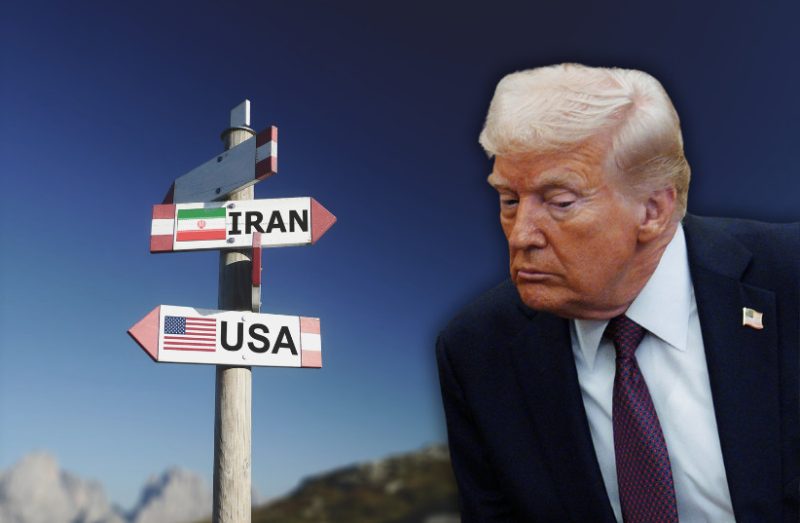
Tehran dares the U.S. with a dangerous ultimatum—halt its enrichment program and risk triggering weaponization, or stay silent and watch it creep to the nuclear finish line.
Iran’s nuclear strategy has become a Catch-22 for the West: act against its program and it promises retaliation with a bomb; do nothing, and it edges closer to one anyway. Trump’s White House now faces Tehran’s ultimate bait-and-switch.
Iran’s Nuclear Catch-22: Damned If You Do, Nuked If You Don’t
Iran is playing its deadliest hand yet—a nuclear paradox designed to paralyze American policy and put Israel on edge. The Islamic Republic is now threatening to build a nuclear weapon if anyone dares to stop it from doing exactly that.
Let that sink in.
Tehran’s message to Washington is as twisted as it is tactical: “Try to stop us from getting the bomb—and we’ll build it.” This isn’t diplomacy. This is nuclear blackmail dressed up as legalism, and it’s aimed squarely at the Trump administration, which has hinted at imminent action unless Iran walks back its provocations.
The statement from Ali Larijani, one of Khamenei’s most trusted insiders, couldn’t be more blatant. Iran, he claims, is still under IAEA supervision, yet its stockpile of enriched uranium is nearing weapons-grade. Meanwhile, Tehran continues to test and perfect long-range ballistic missiles, many capable of carrying a nuclear warhead.
This is Iran’s nuclear Catch-22: if the U.S. bombs its facilities, Iran will race to weaponize; if the U.S. doesn’t act, Iran quietly inches toward the bomb anyway. Either path ends in nuclear crisis.
And that’s exactly how Tehran wants it.
The regime’s logic is deliberately duplicitous. It insists it doesn’t want nuclear weapons—but warns it will absolutely build them if anyone tries to stop what it claims not to want. It’s the ultimate bait-and-switch: demand the right to enrichment under peaceful pretenses, then turn resistance into a pretext for weaponization.
Trump’s message was blunt: either Iran cuts a deal or there will be bombing. Tehran’s response? Try it, and we’ll unleash the very nightmare you fear.
It’s brinkmanship at its most dangerous. Iran is betting it can bluff the West into paralysis while securing Russia and China’s political cover. If Trump acts, he risks igniting the fuse. If he waits, the bomb may build itself in silence.
The question now: can the U.S. escape Iran’s nuclear trap before it detonates—literally or geopolitically?
One misstep, and the Middle East changes forever.
Analysis
Trump’s Tariffs Could Trigger $1.4 Trillion Global Meltdown
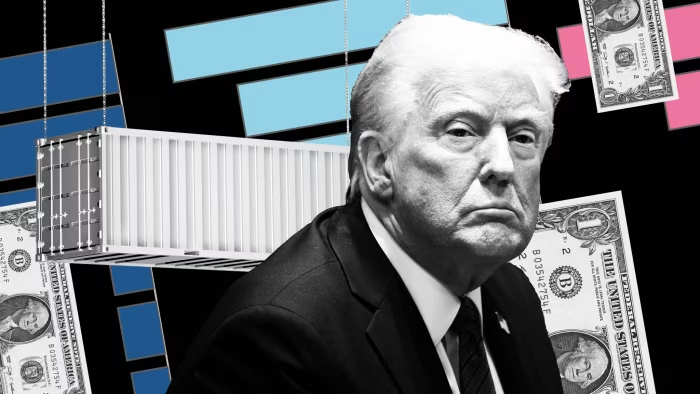
Aston Business School warns Trump’s reciprocal tariff war could shrink US GDP by 1.3%, spike domestic prices by 5.5%, and erase $1.4 trillion in global economic activity.
Donald Trump’s upcoming tariff rollout could unleash a global trade war, slashing $1.4 trillion from the world economy, hurting US consumers with rising prices, and pulling the country closer to recession, warns a new UK study.
Trump’s Trade Tsunami: How ‘Liberation Day’ Tariffs Could Wreck the Global Economy
Donald Trump is about to launch what he calls “Liberation Day”—but economists are sounding the alarm that it may resemble an economic reckoning instead.
Set to begin on Wednesday, April 2, Trump’s reciprocal tariff war could trigger a full-scale economic backlash that costs the global economy $1.4 trillion and raises prices in the US by more than 5.5%, according to a bombshell analysis by Aston Business School in the UK. Far from liberating anyone, the tariffs are now being called a gateway to global disruption.
Trump’s message is clear: America will not be taken advantage of. But the cost of that defiance, economists warn, may be dangerously high. Consumer sentiment in the US is already at a four-year low, the stock market is rattled, and inflationary pressure is climbing fast. The Aston study also estimates that America’s own GDP could contract by 1.3%—a self-inflicted wound that could tip the economy toward recession.
The centerpiece of Trump’s plan is reciprocal tariffs—a retaliatory tax on goods from countries that impose higher import duties on US products. While politically popular with segments of his base, the real-world consequence is a likely global trade war. Allies and adversaries alike are expected to respond in kind, triggering a cascading spiral of tit-for-tat levies that disrupt global supply chains and fracture markets.
Even Trump’s economic cheerleaders are beginning to squirm. The promise of “America First” is colliding head-on with America Pays More, as rising costs on imported essentials—from electronics to autos to food—begin to filter down to everyday consumers.
This isn’t just theoretical. The Aston model echoes 1930s-style trade barriers that exacerbated the Great Depression. The analysis warns that global economies, still reeling from COVID-era disruptions and ongoing wars, are far more fragile than they appear.
As Trump frames the tariffs as an act of national self-respect, critics say the world may remember April 2 not as Liberation Day—but as Isolation Day.
In the end, economic nationalism comes with a price tag—and this one might just bankrupt the very system it’s trying to protect.
Analysis
The West Is Cracking: How Russia and China Plan to Shape the New World Order
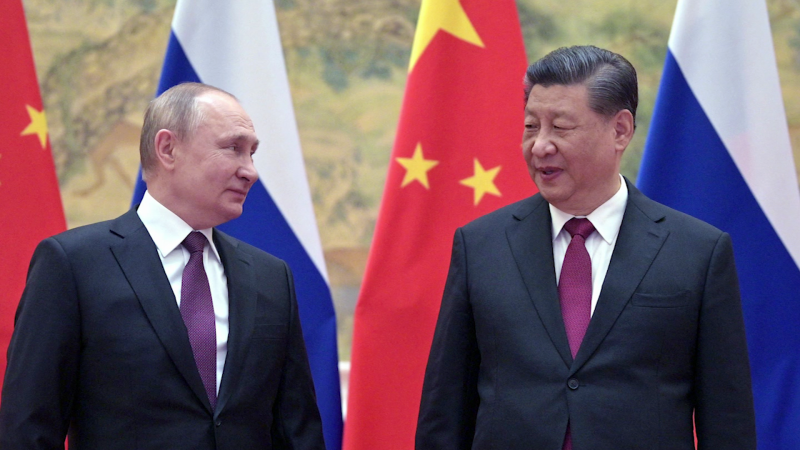
As US-Europe ties unravel, Moscow and Beijing are laying the foundation for a post-Western world rooted in sovereignty, multipolarity, and Eurasian unity.
With the West divided and in decline, Russia and China are positioning themselves to lead a new global era. From economic resilience to strategic unity, their alliance is reshaping international power structures.
Collapse of the West? Russia and China’s Blueprint for a Post-American World
The Western alliance, once the undisputed pillar of global order, is fracturing before our eyes. Strategic incoherence, transatlantic disunity, and the internal implosion of political elites are shaking the foundations of the “liberal international order.” In its place, a new axis is rising—Russia and China, united by a shared vision of multipolarity, sovereignty, and global realignment.
This isn’t just rhetoric. It’s a coordinated counter-offensive against decades of US-led hegemony.
Russia and China’s partnership has evolved from convenient diplomacy to strategic necessity. It’s not merely about balancing the West—it’s about creating an entirely new system of global governance, one that places regional autonomy, mutual respect, and non-intervention at the center.
As Washington’s grip slips, cracks within the Western bloc are deepening. European leaders are growing uneasy with the United States’ unpredictability. Internal divisions within the EU—exacerbated by political polarization in France, Germany, and Italy—mirror the chaos in Washington, where hawks and pragmatists now openly clash over foreign policy direction.
For Beijing and Moscow, this is not a crisis—it’s a golden opportunity.
But the architects of this new world must be wary. The United States, desperate to regain influence, is expected to ramp up efforts to divide Russia and China. Whether through bilateral cybersecurity talks or arms control overtures, Washington will try to pull the two powers apart to prevent deeper Eurasian consolidation.
The true strength of the Russia-China alliance lies in resilience and trust. Joint development of energy infrastructure, cross-border logistics, financial insulation from Western sanctions, and cultural exchanges are no longer symbolic—they’re strategic. The key now is expanding this cooperation to the societal level: universities, think tanks, and youth programs that forge unbreakable links across generations.
Moreover, Russia and China ensuring the region isn’t carved up by competing influences but instead becomes a cohesive, stable, and autonomous bloc.
The West’s decline doesn’t guarantee Eurasia’s rise—strategy does.
As Western elites spiral into chaos and cling to outdated dominance, Moscow and Beijing do the opposite: consolidate, innovate, and integrate. Because in this global inflection point, history won’t wait.
It will be shaped—by those bold enough to act.
Analysis
Israel Throws Weight Behind Ethiopia’s Bid for the Sea

Israeli Envoy Says Ethiopia Deserves a Port, Backs Peaceful Quest for Red Sea Access – Abraham Negussie calls Ethiopia’s maritime ambitions “essential” for regional justice and economic sustainability.
Israel’s ambassador to Ethiopia, Abraham Negussie, has publicly backed Ethiopia’s demand for access to the Red Sea — but only through “peaceful and diplomatic means.” While the tone may sound balanced, make no mistake: this is a diplomatic bombshell.
For years, Ethiopia’s quiet but persistent campaign to reclaim a maritime outlet has simmered beneath the surface, causing friction with Eritrea, Somalia. Now, with a major regional and Western ally like Israel speaking out in its favor, the stakes have just been raised.
Negussie’s remarks are more than just diplomatic niceties. When he says, “a country with the largest number of population should not be deprived of its right to access sea,” he is endorsing a controversial geopolitical philosophy: that demographics justify territorial or strategic claims. That sentiment will not sit well in Asmara.
It’s no secret that Ethiopia’s ambitions may center around Somaliland’s Berbera Port — a critical node in Red Sea logistics and currently the centerpiece of a growing UAE-Somaliland-Israel axis. Could Israel now be playing both sides? Supporting Ethiopia’s diplomatic path to a port while cementing economic and security ties with Somaliland?
Either way, this is a calculated signal to the world that Ethiopia’s rise as a regional superpower should not be obstructed by colonial-era borders. With Prime Minister Abiy Ahmed insisting that sea access is “existential,” and now with public backing from an Israeli envoy, the Horn could be headed for a strategic shake-up.
The message is clear: Ethiopia’s maritime hunger is now backed not just by ambition, but by international endorsement. The question is, will Eritrea see this as diplomacy—or provocation? And will Somaliland, with its strategic ports and growing international recognition campaign, be forced to choose between appeasing its powerful neighbor?
Either way, the regional silence just got broken. And the ripples are coming fast.
Ethiopia’s Rightful Access to the Sea: Embracing Historical Ties with Somaliland
The Ethiopia-Somaliland MoU: A Power Play Somalia Can’t Match
Somaliland condemns Egyptian Foreign Minister’s comments, Celebrates Strategic MoU with Ethiopia
How Somaliland’s Recent MOU with Ethiopia and Somalia’s Decline Highlight the Case for Recognition
Somaliland and Ethiopia Explore Enhanced Military Cooperation Amid Regional Diplomatic Shifts
Analysis
Trump’s War Doctrine: Is Tehran the Next Target?

In a fiery new phase of global geopolitics, all signs point toward a turning tide in Washington’s posture toward Iran — and it may be irreversible.
Sources close to the U.S. intelligence community and military planning circles are signaling what they call a “pre-operational environment” — a coded reference to preparations for a potential military strike, possibly targeting the heart of the Islamic Republic’s regime architecture. That includes, Khamenei himself, IRGC command-and-control networks, and the nuclear and drone infrastructure that feeds regional instability from Yemen to Lebanon.
Trump’s Second-Term Red Line?
President Donald Trump has made clear through both official channels and strategic leaks: the Islamic Republic is in the crosshairs not because of its people, but because of its regime — a corrupt clerical elite the White House now labels “fundamentally illegitimate.”
“The regime in Tehran is not salvageable. Its ideology is based on permanent war with the West and terror as foreign policy,” said a former senior EU diplomat who now advises the Trump administration. “This is not just about Iran’s nuclear program anymore. This is about ending the ideology itself.”
And there is more: a second U.S. aircraft carrier now looms in the Gulf. Cyber-activity targeting Iranian defense networks has surged. And recent satellite activity suggests U.S.-Israeli joint reconnaissance flights over Iran’s nuclear and military facilities.
The Letter That Changed Everything
Senior sources in both Washington and Israel told that Trump personally authored a direct letter to Ali Khamenei weeks ago. It included what one source called “final conditions”: full dismantling of Iran’s uranium enrichment program, cessation of arms shipments to groups like Hezbollah and the Houthis, and immediate recognition of Israel’s right to exist.
Khamenei’s reported response? Silence.
But in Tehran, there’s panic.
A former Mossad field officer told media: “This is 1989 for the mullahs. They just don’t realize it yet. Trump and Netanyahu both know they won’t get a better window for regime collapse.”
Internal Collapse — or External Decapitation?
Dissidents inside Iran have reportedly been briefed on a contingency plan for a post-Khamenei transition. One U.S.-based Iranian opposition figure said there are “channels wide open between the White House and exiled Iranian democratic forces.”
Meanwhile, cyber units in Langley and Tel Aviv have quietly ramped up operations designed to undermine regime command chains. “This is not just boots-on-the-ground warfare,” noted a former CIA cyber-ops analyst. “This is doctrine-level collapse from within.”
A War No One Wants — But Everyone’s Preparing For
Despite official denials, the tempo of military coordination between the U.S., Israel, Saudi Arabia, and even Azerbaijan has quickened. An ex-U.S. Navy admiral told WARYATV that what’s coming could resemble “a five-day lightning operation to neutralize Iran’s capacity to retaliate — followed by a psychological campaign to trigger internal collapse.”
Yet, some officials remain cautious. “One wrong move could open up a regional inferno,” warned a former EU envoy to the Middle East.
Free Tehran? Or Forever War?
Trump dares to confront what previous administrations only negotiated with. And the stakes are colossal.
Will Tehran fall to pressure, or be dragged into a fight it can’t win? Is Trump’s endgame total regime change — or simply peace through power?
In the streets of Iran, many already chant “Death to the Dictator.” But what comes after the collapse?
The flags of Israel and America raised in a free Tehran may be a fantasy — or the first image of a new Middle East order.
Analysis
A New Chapter in the Caucasus? Armenia-Azerbaijan Peace Deal Gains Unlikely Support

In an unexpected diplomatic alignment, a growing number of global and regional powers—including the United States, Iran, Turkey, and even Russia—appear to be backing a draft peace agreement between Armenia and Azerbaijan. The rare convergence of interests could mark a historic shift in the South Caucasus, a region marred by decades of bloody conflict and geopolitical rivalries.
US-Led Diplomacy and the Role of Trump Doctrine
The United States, under Secretary of State Marco Rubio and envoy Steve Witkoff, has emerged as a key architect of the peace initiative. The U.S. State Department praised the draft treaty as a “historic opportunity,” framing it as part of President Trump’s broader vision of a “more peaceful world.”
According to State Department officials, the peace agreement could signal a turning point in the U.S.’s post-Afghanistan strategy of creating new security architectures through economic diplomacy, bilateral partnerships, and conflict resolution in flashpoint regions.
Steve Witkoff, now a frequent flyer between Baku, Yerevan, and Moscow, has been instrumental in aligning disparate actors toward this agreement. His involvement in the Black Sea maritime truce and Gaza ceasefire negotiations has raised speculation that Trump’s administration is attempting a sweeping diplomatic pivot ahead of U.S. elections.
Turkey, Iran, and the Economic Angle
Turkey, traditionally a staunch ally of Baku, has publicly backed the deal. Turkish Foreign Minister Hakan Fidan’s meetings in Washington underscored Ankara’s renewed focus on regional stability and energy security.
More surprising is the enthusiastic support from Iran. Despite a history of alignment with Armenia, Iran is now pushing for economic engagement with both sides. Iran’s Foreign Minister Abbas Araghchi emphasized Tehran’s vision of a North-South trade corridor that could link the Caspian to the Persian Gulf, using peace in the South Caucasus as a gateway to regional development.
This corridor, vital to Iran’s long-term economic strategy amidst sanctions, would benefit enormously from a normalized Armenia-Azerbaijan relationship. Tehran’s pragmatic shift appears to accept Azerbaijan’s dominant military position following the 2023 Nagorno-Karabakh war.
Russia: A Quiet Endorsement
Russian President Vladimir Putin was reportedly briefed by Armenian Prime Minister Nikol Pashinyan about the progress of peace talks. While Moscow’s role remains muted, analysts believe the Kremlin sees the deal as a way to prevent further Western encroachment in its traditional sphere of influence, particularly at a time when Russia is bogged down in Ukraine and facing growing Chinese influence.
Russia’s muted but notable support may also reflect its pivot to managing crises with minimal cost—letting regional actors take the lead while retaining leverage.
For Armenia, the deal is a high-stakes wager. After a series of military defeats, including the loss of Nagorno-Karabakh, Yerevan is under intense domestic and international pressure. Prime Minister Pashinyan’s willingness to negotiate may reflect a hard-nosed recognition of Armenia’s constrained strategic position.
Iranian and U.S. diplomacy offer lifelines: economic corridors, trade incentives, and normalization with neighbors. But risks remain. Pashinyan’s political survival may hinge on whether the treaty delivers real security and economic dividends.
If ratified, the Armenia-Azerbaijan peace deal could catalyze further regional diplomacy. Observers note that its success could spill over into progress on the Syria and Ukraine fronts, particularly amid rumors of a Black Sea naval accord and deeper Saudi-Iran cooperation.
Even the Vatican has weighed in, with Pope Francis supporting peace in the region. Such symbolic endorsements add moral weight to what may become a major diplomatic win for Trump-era foreign policy.
Conclusion
A convergence of strategic needs, economic aspirations, and realpolitik is driving unlikely partners to embrace peace in the South Caucasus. For now, the peace treaty remains a draft. But the rare alignment of U.S., Iranian, Turkish, and Russian interests signals a moment of opportunity.
If sealed, the treaty could redefine power dynamics in the region, offering a new model for conflict resolution in a multipolar world.
Analysis
Signal Fallout: Trump Defends Waltz, But Fallout Spreads Beyond One Chat Thread

Inside the Signal Blunder That Triggered a National Security Storm.
In what is now being dubbed the “Signal Slip,” President Donald Trump has admitted that a national security staffer in Mike Waltz’s office was responsible for inadvertently adding Atlantic editor Jeffrey Goldberg to a high-level encrypted Signal group chat. The thread, known internally as “Houthi PC Small Group,” was actively discussing sensitive military operations, including the timing of a U.S. strike against Houthi targets in Yemen.
The story, first exposed by Goldberg himself in a viral Atlantic piece, sent shockwaves through the Beltway and beyond. Goldberg, after noticing he had been added to the thread, monitored the discussion and even tracked the impact of the strike in real time from a supermarket parking lot.
“It was one of Michael’s people on the phone,” Trump confirmed in an NBC interview. While brushing it off as a mistake, the president stood firm behind his embattled National Security Advisor: “He’s a good man. He’s not getting fired.”
National Security, Political Theater, or Both?
Despite the White House’s insistence that “no war plans” or classified information were discussed in the group chat, the inclusion of a prominent journalist in a real-time military operations discussion has reignited concerns about operational security, information discipline, and the political culture inside Trump’s second-term White House.
“If this had happened in Europe or under a NATO command structure, heads would roll,” said a former senior NATO cyber defense official. “Even unintentional exposure of operational chatter is treated as a major failure.”
The Bigger Questions No One Is Asking
- Why was a live military discussion happening over a Signal thread in the first place?
- Were there other unintentional recipients?
- Is this part of a larger pattern of informal backchannels replacing traditional NSC protocol?
Sources inside Capitol Hill told the media that several members of the Senate Intelligence Committee are quietly considering a closed-door inquiry into the communications protocols used by top Trump officials. Democrats are expected to press for public hearings.
Waltz Under Pressure, but Trump Digs In
Mike Waltz, a former Green Beret and prominent figure in Trump’s foreign policy team, has long balanced between the “America First” posture of the administration and his past hawkish credentials. This latest scandal has only fueled critics on both sides: isolationists see it as proof of carelessness; interventionists see it as evidence of amateurism.
Yet Trump’s backing appears solid — for now.
“Waltz knows what he’s doing. He just needs to tighten his team,” one White House insider said. “Trump sees loyalty first, always.”
Implications for U.S. Operations Abroad
The leak comes as U.S. operations in Yemen have dramatically intensified, targeting Houthi infrastructure in what officials describe as a campaign to cripple Iran-backed maritime threats in the Red Sea. The Biden-era Operation Guardian of Prosperity has now fully morphed under Trump into a muscular, rapid-strike posture.
If anything, the Signal debacle risks overshadowing what the administration sees as a strategic success. But for America’s allies, especially those coordinating intelligence in Yemen and the Gulf, the breach may signal a deeper vulnerability.
WARYATV Strategic Forecast
- Expect short-term political containment, not accountability. Waltz is likely to survive if Trump maintains support.
- Congressional oversight will increase, especially on encrypted app usage by federal officials.
- Allies may reconsider the sensitivity of shared intelligence during ongoing Houthi and Red Sea operations.
- Watch for renewed calls for a broader NSC communications overhaul — though real change remains unlikely in an election year.
Conclusion
This was not a typical leak. It wasn’t a whistleblower, a hack, or a spy. It was a simple mistake that peeled back the curtain on how major national security decisions are being communicated in the Trump administration — through apps, in real-time, sometimes with journalists watching.
And in geopolitics, as in war, even one mistake can change the battlefield.
-

 Analysis3 weeks ago
Analysis3 weeks agoSaudi Arabia’s Billion-Dollar Bid for Eritrea’s Assab Port
-

 ASSESSMENTS3 days ago
ASSESSMENTS3 days agoOperation Geel Exposes the Truth: International Community’s Reluctance to Embrace Somaliland as a Strategic Ally
-

 Somaliland2 months ago
Somaliland2 months agoSomaliland and UAE Elevate Ties to Comprehensive Strategic Partnership
-

 Africa12 months ago
Africa12 months agoHow Somaliland Could Lead the Global Camel Milk Industry
-

 Analysis12 months ago
Analysis12 months agoIran escalates conflict, attacking Israel; US forces help Israel to intercept Iranian projectiles
-
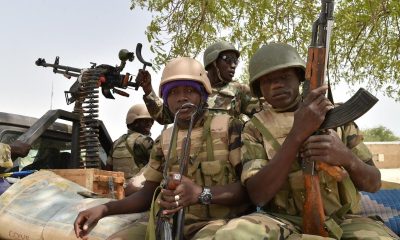
 Top stories10 months ago
Top stories10 months agoGunmen Kill 11 in Southeastern Nigeria Attack, Army Reports
-

 Analysis12 months ago
Analysis12 months agoIsrael and Iran on Edge: Tensions Escalate Amidst Rising Threats
-

 TECH10 months ago
TECH10 months agoZimbabwe Approves Licensing of Musk’s Starlink Internet Service





